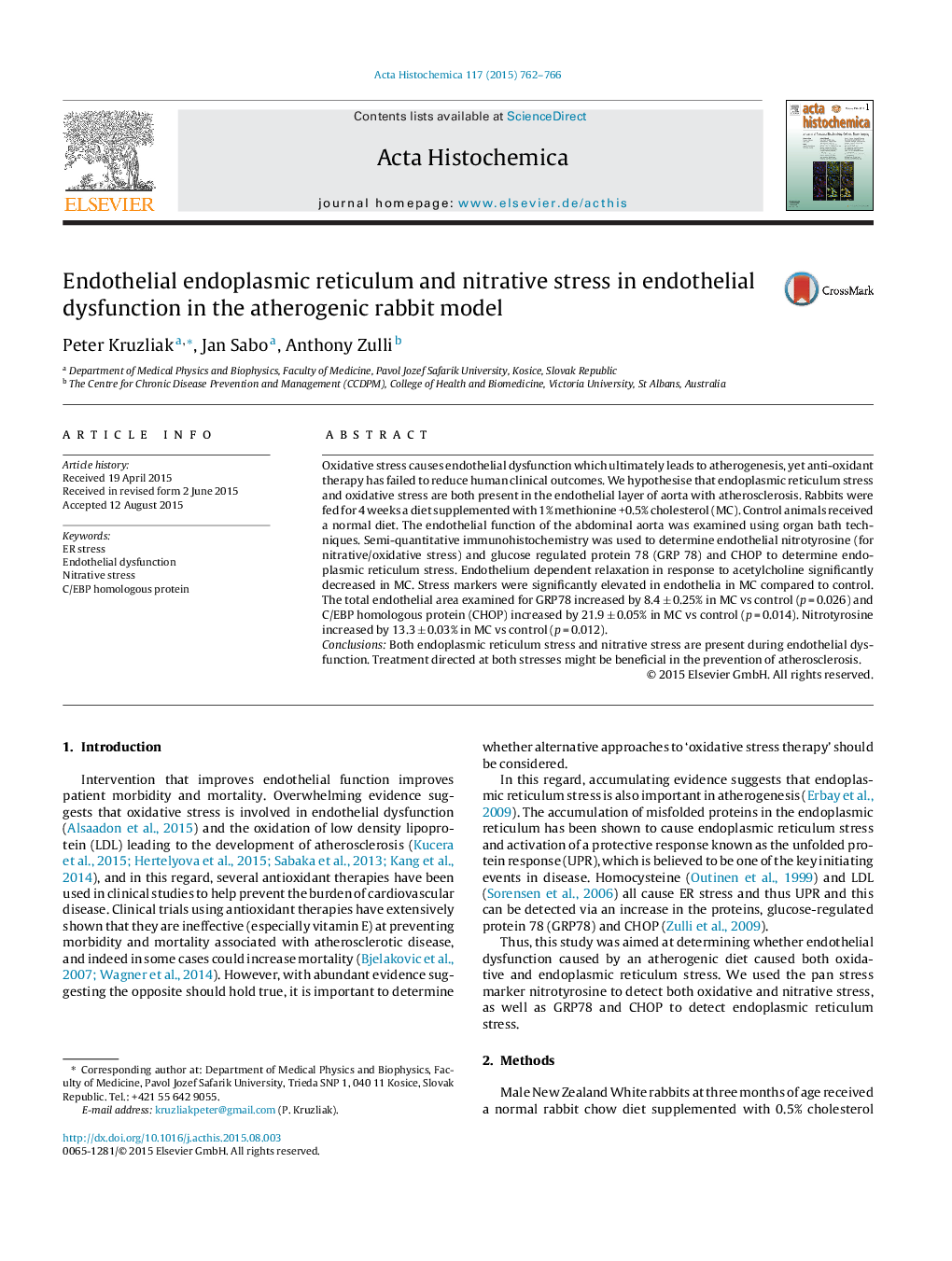| Article ID | Journal | Published Year | Pages | File Type |
|---|---|---|---|---|
| 1923401 | Acta Histochemica | 2015 | 5 Pages |
Oxidative stress causes endothelial dysfunction which ultimately leads to atherogenesis, yet anti-oxidant therapy has failed to reduce human clinical outcomes. We hypothesise that endoplasmic reticulum stress and oxidative stress are both present in the endothelial layer of aorta with atherosclerosis. Rabbits were fed for 4 weeks a diet supplemented with 1% methionine +0.5% cholesterol (MC). Control animals received a normal diet. The endothelial function of the abdominal aorta was examined using organ bath techniques. Semi-quantitative immunohistochemistry was used to determine endothelial nitrotyrosine (for nitrative/oxidative stress) and glucose regulated protein 78 (GRP 78) and CHOP to determine endoplasmic reticulum stress. Endothelium dependent relaxation in response to acetylcholine significantly decreased in MC. Stress markers were significantly elevated in endothelia in MC compared to control. The total endothelial area examined for GRP78 increased by 8.4 ± 0.25% in MC vs control (p = 0.026) and C/EBP homologous protein (CHOP) increased by 21.9 ± 0.05% in MC vs control (p = 0.014). Nitrotyrosine increased by 13.3 ± 0.03% in MC vs control (p = 0.012).ConclusionsBoth endoplasmic reticulum stress and nitrative stress are present during endothelial dysfunction. Treatment directed at both stresses might be beneficial in the prevention of atherosclerosis.
